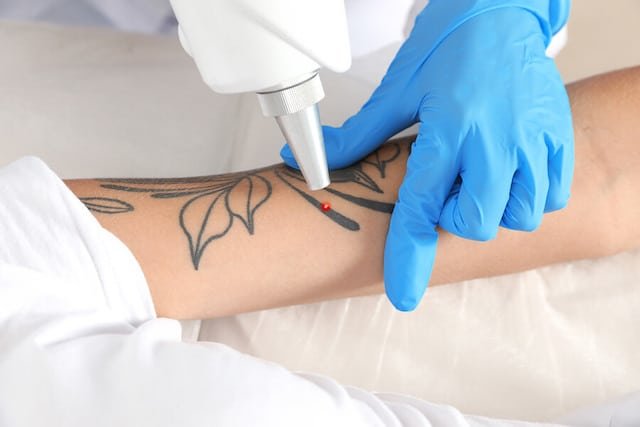
Laser tattoo removal has become a popular method for individuals seeking to erase unwanted tattoos. While it’s an effective technique, many people wonder about its potential side effects, particularly hyperpigmentation. If you’re considering Laser Tattoo Removal in Islamabad, understanding the risks and how to mitigate them is essential for making an informed decision.
What is Hyperpigmentation?
Hyperpigmentation is a skin condition characterized by the darkening of certain areas of the skin. This occurs when an excess of melanin—the pigment that gives skin its color—is produced. Hyperpigmentation can manifest as spots, patches, or overall darker areas of skin and can be triggered by various factors, including sun exposure, hormonal changes, and skin injuries.
How Does Laser Tattoo Removal Work?
Laser tattoo removal works by using concentrated beams of light to target and break down the ink particles in the skin. Different wavelengths of laser light are used to effectively target various colors of ink. During the process, the body’s immune system gradually absorbs and eliminates the fragmented ink particles, leading to the gradual fading of the tattoo.
The Risk of Hyperpigmentation
While laser tattoo removal is generally considered safe, it does carry a risk of hyperpigmentation, especially in individuals with darker skin tones. The heat generated by the laser can stimulate melanin production in the skin, leading to darkening in the treated area. Factors that can increase the likelihood of hyperpigmentation include:
- Skin Type: Individuals with darker skin tones are at a higher risk due to increased melanin levels.
- Tattoo Location: Tattoos located on areas of the body that receive more sun exposure may be more prone to hyperpigmentation after treatment.
- Post-Treatment Care: Failing to follow proper aftercare instructions can exacerbate the risk of developing hyperpigmented areas.
Minimizing the Risk of Hyperpigmentation
- Consultation with a Professional: Choosing a qualified practitioner is crucial. They can assess your skin type and tattoo characteristics to determine the most appropriate laser settings, minimizing the risk of adverse effects.
- Patch Test: Some clinics may recommend a patch test before the full treatment. This involves treating a small area of skin to see how it reacts to the laser, providing valuable insight into how your skin might respond.
- Sun Protection: Protecting the treated area from sun exposure is essential. UV rays can trigger hyperpigmentation, so using a high-SPF sunscreen and covering the area with clothing can help.
- Post-Treatment Care: Follow the aftercare instructions provided by your practitioner diligently. This may include keeping the area clean, avoiding hot showers, and using recommended creams or ointments to promote healing.
- Avoiding Picking or Scratching: It’s important to avoid picking at the treated area as this can lead to irritation and potentially increase the risk of hyperpigmentation.
Conclusion
While hyperpigmentation is a potential side effect of laser tattoo removal, taking appropriate precautions can significantly reduce this risk. Understanding your skin type, consulting with a qualified professional, and adhering to post-treatment care can help you achieve the best possible results. If you’re considering Laser Tattoo Removal in Islamabad, the experts at SKN Cosmetics Clinic are here to provide personalized care and guidance throughout your tattoo removal journey. Embrace the opportunity for a fresh start and let us help you navigate this process safely and effectively



